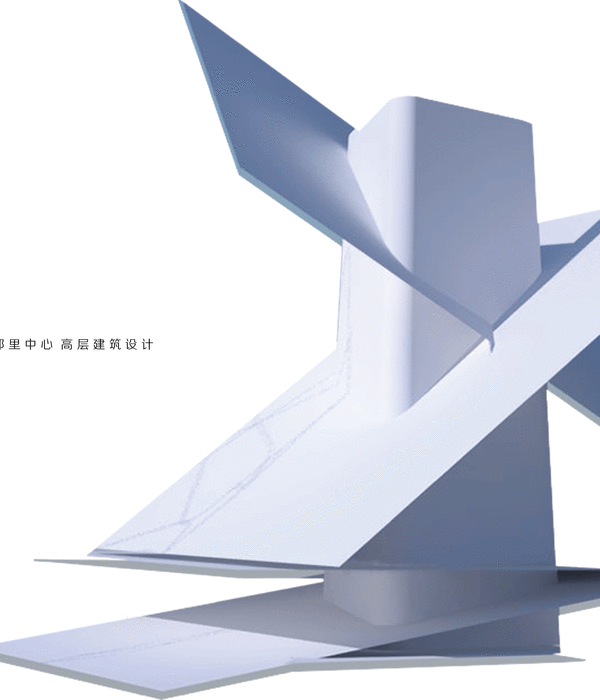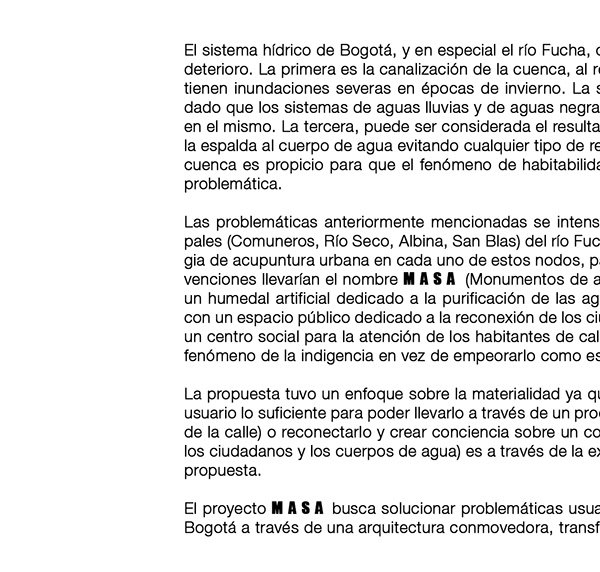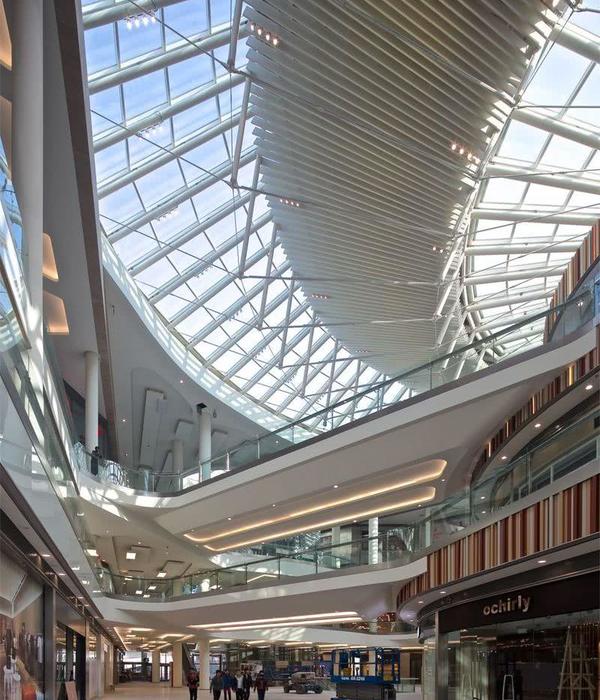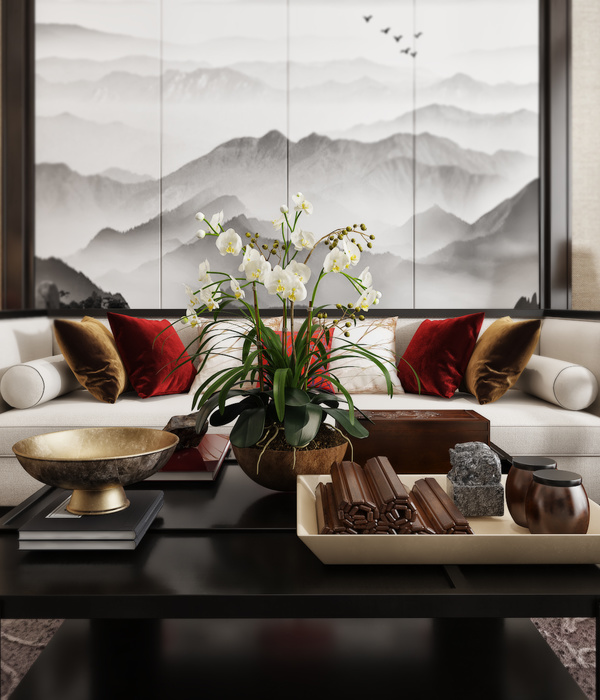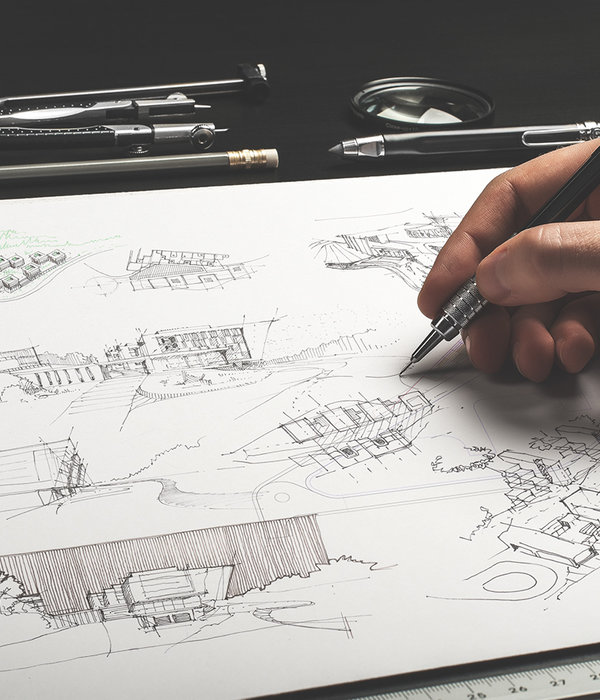项目严格遵循了当地的城市总体发展规划,生动有趣地诠释了规划条文,提高了场地的利用效率,赋予封闭街区更高的兼容性。建筑师高效分配体块,以简洁中性的手法创造出清晰明快的建筑外观。随机布置的不同类型的开口赋予了建筑鲜明的抽象和中性特征。
The General Urban Development Plan was strictly considered and respected, resulting in an interesting reinterpretation of the city ordinance, making the closed block plan compatible with a more effective use of the site. The project accepts the distribution of the given volumes and enhances their clearness using a simple and neutral style. The use of a limited number of opening types, which are apparently distributed randomly, provides a strong abstract and neutral character to the building.
▼从街道看建筑,view from the street © Angel Baltanás; María Roldán
▼东立面,east facade © Angel Baltanás; María Roldán
▼北立面,north facade © Angel Baltanás; María Roldán
建筑师着重打造了独特的底层入口空间,旨在为都市街区提供宽敞的庭院。横向排布的地下停车场划分出两种不同的地面铺装,停车场的屋顶上是大面积的密集铺装,而其他空间则采用柔性地面,并配合种植了大中型的本地绿植。此外,连续起伏的小山丘在水平方向体现出细微的变化,通过地表植被创造出简单多样的内部景观。连续起伏的柔化地面上,薰衣草、百里香和迷迭香这些不需要经常浇水的植物紧贴着地表沿小路蜿蜒生长。
The generous dimensions of the courtyard of the urban block asks for a project characterized by its delicate approach at the ground floor level. The transversal disposition of the car park is used to establish two clearly differentiated zones: over it, on its roof, a great paved surface with intensive use, whereas the rest of the space is solved with soft floor finishes and intensive planting of medium and big scale indigenous trees. Furthermore, the slight alterations on the horizontal plane are reinterpreted with small hills, which recreate a simple and varied interior landscape with low vegetation. The continuous and wavy soft surfaces are covered with lavender, thyme and rosemary, which require little water for maintenance, and with winding compacted earth paths.
▼独特的底层空间,unique ground floor space © Angel Baltanás; María Roldán
▼庭院内部,inside the courtyard © Angel Baltanás; María Roldán
▼从二层看庭院,view of the courtyard from the second floor © Angel Baltanás; María Roldán
社区综合体位于北部街区,为住户提供了儿童聚会、举办会议的场所。位于二层的建筑入口享有充足的阳光,是公共活动的绝佳场地。
The complex includes a space for community use (for kid’s parties, meetings, etc.) located on the north block. The entryways, high and well sunlit, are inviting spaces for communal activities.
▼社区综合体,the complex © Angel Baltanás; María Roldán
▼位于二层的建筑入口,the entryways high and well sunlit © Angel Baltanás; María Roldán
▼室外走廊,outdoor corridor © Angel Baltanás; María Roldán
▼室外露台,outdoor terrace © Angel Baltanás; María Roldán
小户型公寓并不仅仅是大户型公寓的简化。项目中的小尺寸平面定义了一种不同于传统社会住房的全新居住类型,在年轻住户和户主之间建立起新的联系,为未来潜在的购买奠定了基础。建筑师对传统的室内元素进行了修改,以满足新的需求。通过可移动面版和滑动式隔墙,室内元素可以灵活分配。大面积起居空间的集中布局、建立厨房和起居空间的视觉联系是方案的基本策略,保证交通空间的浪费可以降至最低。公寓中全部的厨房都有与外界连通的开口,通风条件良好,并安装了主动通风设施。集中布置的厨房与起居室在视线上也形成了良好的互动关系。通过灵活的布置,不论是否与起居室相连,次卧都可以作为小型办公室使用。
A small apartment is not a reduced version of a bigger one. Its dimensions determine a new type of housing unit, essentially different to the conventional social housing examples. The young and homogeneous users and their also homogeneous and singular relation with the owner of the apartment (units for rent with future buying possibilities) also determines and modifies the conventional elements that are often used for the construction of this type of buildings. Thereby, the flexibility in the distribution of the different elements, using moveable panels or sliding partition walls, the minimized circulation spaces achieved by concentrating the maximum surface possible in the living-dining area and the possibility of visually linking the kitchen to the living-dining room were features present in the basis of the design. The kitchens are well ventilated, 100% of them have openings to the exterior as well as the indispensable forced ventilation mechanisms. They can be (or not) considered integrated kitchens so that their disposition allows the kitchen space to be visually connected (or not) to the living-dining room.The current apartment is also, in many occasions, a small office. The distribution of the second bedroom allows it to be also used as a small study, linked or not to the living-dining area.
▼灵活配置的室内空间,flexible interior space © Burgos & Garrido
项目划分了白天和夜晚的活动区域,旨在实现最高效的配置。可灵活布局的一系列小空间连接着公寓的不同区域,为布局的变化创造出丰富的可能性。
The project looks for the maximum clarity hence the segregation of the day and night areas and the enrichment of a flexible distribution system with small intermediate spaces that link the different areas of each apartment, making the most of its typological possibilities.
▼场地平面,site plan © Burgos & Garrido
▼轴测图,axonometric drawing © Burgos & Garrido
Client: Agencia de Vivienda Social de la Comunidad de Madrid Arquitects: Francisco Burgos & Ginés Garrido / BGAA Colaborators: Agustín Martín; Pilar Recio; Raquel Marugán; Cristina Cordero; Emilio Ontiveros; Almudena Carro; Samir Alaouim Engineering: Juan Carlos Salvá; BGAA, Carma Ingenieros; Montse Vall-Llossera Dates: 2010-2015 Budget: 11.734.428€ Photogrphers: Angel Baltanás; María Roldán
{{item.text_origin}}

